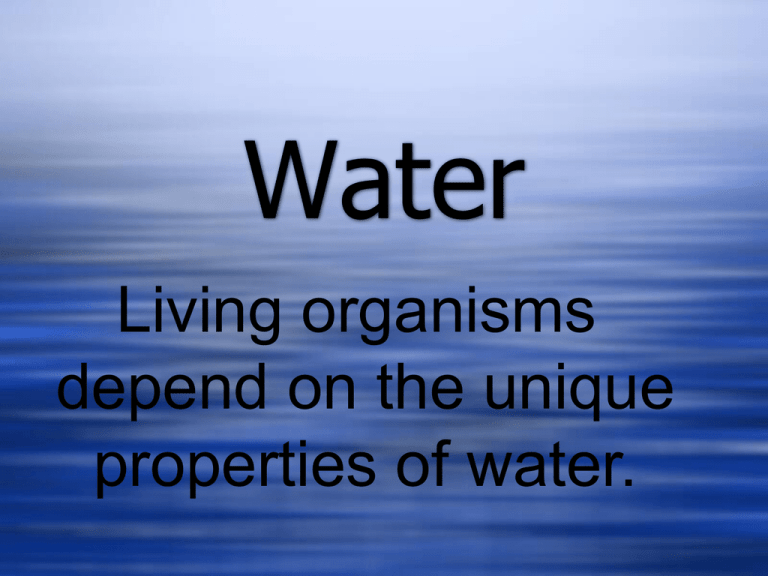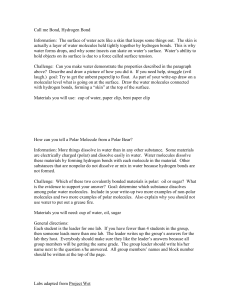Water Molecules
advertisement

Water Living organisms depend on the unique properties of water. H2O Molecule • 2 atoms of hydrogen: Atomic # = 1 • How many protons and electrons? • 1 atom of oxygen: Atomic # = 8 • How many protons and electrons? Electron Configuration of Water Space-Fill Model of Water Water Molecule Polarity • Oxygen is a bigger atom with 8 protons and pulls more forcefully on the electrons than hydrogen does. • This creates positive (+) and negative (-) poles on the molecule. Polar Covalent Bonds • Bonds that form when electrons are shared unevenly. • Areas of the molecule are slightly charged, although water molecules remain neutral. Hydrogen Bonds • Hydrogen (+) of one molecule is attracted to a nearby atom (-) of a different molecule of water or other substance Hydrogen Bonds are Weak • Electrons are not shared, gained, or lost • Temporary bonds form • Bonds are easily broken Hydrogen Bonds form in Water and DNA Cohesion Adhesion Surface Tension Special Properties of Water • Cohesion: Attraction of same molecules to each other • Adhesion: Attraction of different molecules to each other • Surface Tension: The force needed to break the surface of a liquid due to cohesion Polar and Non-Polar Molecules Polar molecules repel non-polar molecules • Water is polar • Oil is nonpolar The Cell Membrane has Polar and Non-Polar Regions Capillary Action: How Water Moves up Plants • Plant tubes (xylem) are made of cellulose which is polar. • Water molecules are attracted to the sides of thin tubes of xylem. Soap and Water • The surface of water has high tension due to the strong force of cohesion. • Soap molecules have two ends. One end is attracted to water and the other end repels water. • Soap separates the water molecules and breaks the surface tension. What Happened to the Pepper? • Pepper floats on the water. • Soap break the surface tension of water by getting “between” water molecules. • Pepper scatters as water’s hydrogen bonds are broken near the soap. How many drops of water can you place on a penny? http://programs.northlandcollege.edu/bi ology/Biology1111/animations/hydroge nbonds.html









